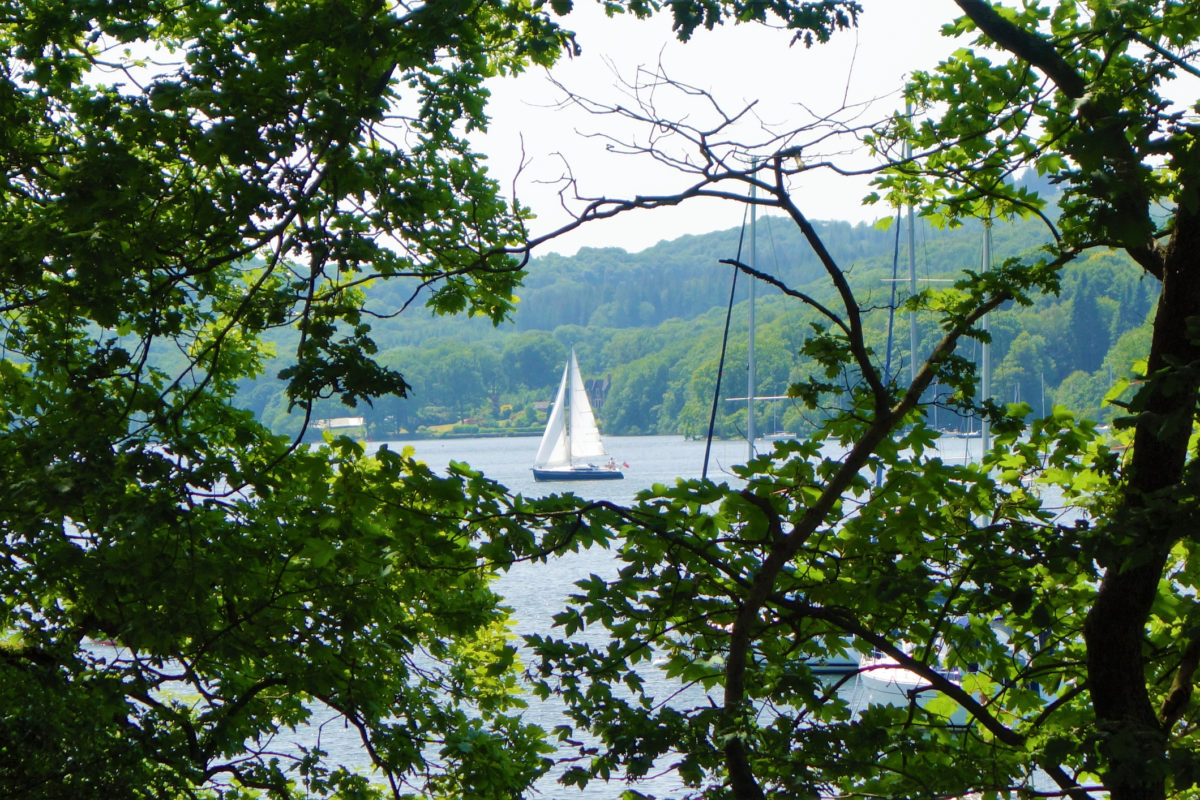
Trees may frame or enhance your views. Topping trees for views is a bad idea for several reasons.
Perhaps you have a large tree that is blocking your view of the water or mountains. Some people think the solution is to top the tree to make it shorter. That is not a good short-term or long-term strategy.
Trees may enhance your view by framing the vista and adding visual interest, said the Washington Department of Natural Resources. They may bring distance into perspective and focus the view on the landscape beyond.
There are a number of reasons why topping is a bad idea, according to our friends at Plant Amnesty.
It won’t work.
Topping won’t keep your tree small. After a deciduous tree is topped, it grows back rapidly. It is trying to replace the missing leaf area so it can manufacture food for the trunk and roots.
If your tree doesn’t grow back rapidly, it is because you have damaged it so much that it has begun to die. It is in a downward spiral.
It’s expensive.
You need to prune a topped tree every few years to keep it small. Each time you cut a branch, many long, skinny young shoots (called suckers or watersprouts) grow rapidly back to replace it. You can cut them again, but they always regrow the next year. So you will need to cut them and recut them.
On the other hand, a properly pruned tree won’t stimulate an upsurge of regrowth. So it doesn’t need to be pruned as often. Proper pruning actually improves the health and beauty of a tree, costing you less in the long run.
Topping also reduces the appraised value of your tree. “Healthy, well-maintained trees can add 10 to 20 percent to the value of a property,” according to the International Society of Arboriculture. But a topped tree may be worth hundreds of dollars less than a properly pruned tree. You can even sue a tree company for wrongfully topping a tree.
It’s ugly.
The sawed-off limbs of a topped trees are just the beginning of the eyesore. The tree will regrow into a witch’s broom of ugly, straight suckers and sprouts.
Topping destroys the natural beauty of a tree, the graceful taper from the trunk to ever finer and more delicate branches and the regular division of branches.
It’s dangerous.
“According to Dr. Alex Shigo, world-renowned scientist and author on the subject of arboriculture (trees), topping is the most serious injury you can inflict upon your tree,” Plant Amnesty said.
“A stressed tree with large, open pruning wounds is more vulnerable to insect and disease infestations,” according to the International Society of Arboriculture. The tree may be too weak to defend the wounds against invasion. Some insects are attracted to the chemical signals that trees release.
Topping creates hazardous trees.
- Few trees can defend the multiple severe wounds caused by topping. The decay organisms have a free path to move down through the branches. The tree will rot from the inside out.
- Topping starves the tree, which can lead to root rot.
- New limbs are weak and poorly attached, so they may break later in the wind.
- The thick sucker regrowth makes the tree top-heavy and more likely to fall in a wind storm.
It makes you look bad.
“Topping makes you appear to be a cruel or foolish person,” according to Plant Amnesty. “You may top a tree to create a water view, but you should know that some friends and neighbors—who probably won’t say so because they are being tactful— see a view of a butchered tree with water in the background.”
What can you do instead of topping a tree?
You can enhance views by thinning, windowing or skirting.
- Thinning removes foliage evenly through the tree’s canopy. This will allow more sunlight through, while not severely damaging the tree. It creates a filtered view through and beyond the foliage. Thinning retains the tree’s natural form.
- Windowing is selectively removing branches within an area of the tree. An arborist can carefully choose which branches to cut and make proper pruning cuts. This leaves a window in a tree that provides a fully framed view. It also maintains the health of the tree.
- Skirting or crown raising is the removal of lower branches to open up a view looking under the foliage. Don’t make the skirt too short. Think midi skirt, not mini skirt.
It is important not to remove too much of the tree with these techniques. It is usually best to remove no more than 1/4 to 1/3 of the tree’s branches. Removing more is stressful for the tree.
You can contact an ISA Certified Arborist to properly prune your trees. Proper pruning can remove excessive growth without the problems topping creates.
In Harmony has ISA Certified Arborists on staff. Contact us if you would like to talk about pruning your trees.
You can learn about pruning from Plant Amnesty’s YouTube channel. They have 106 videos on various pruning topics.
